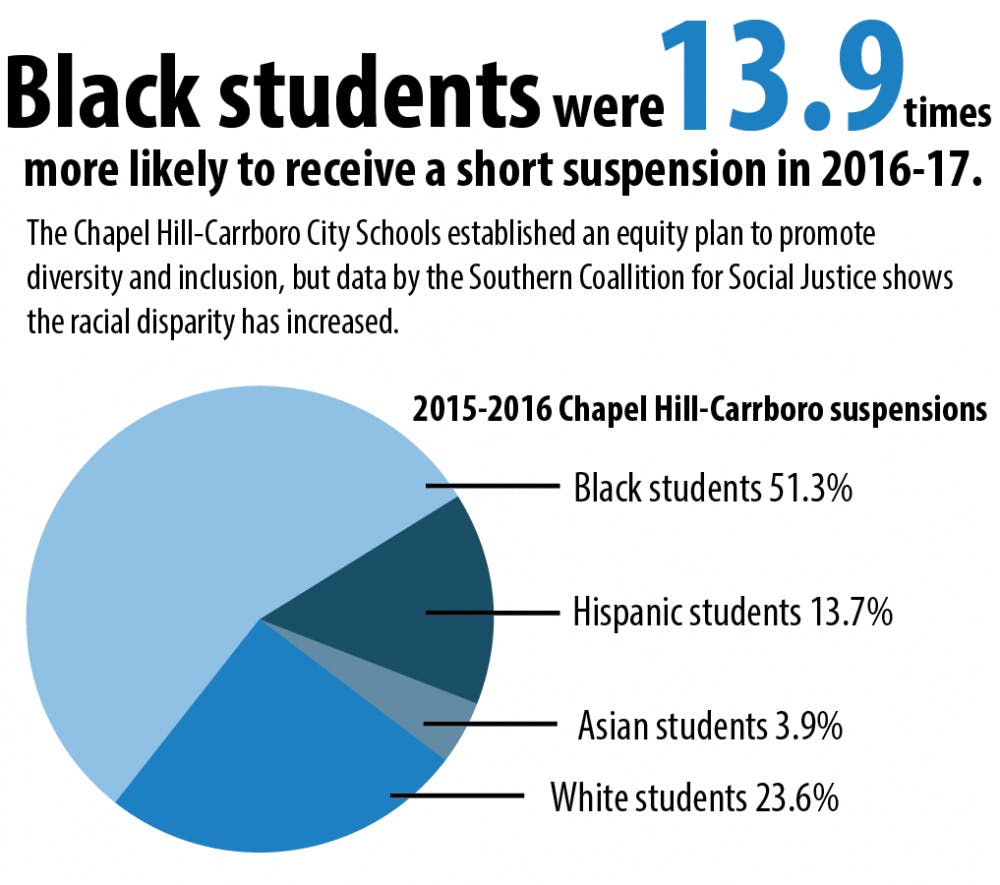In early 1993, Dianne Jackson, at the time a librarian at Glenwood Elementary, joined other school employees to form The Blue Ribbon Task Force, the first committee to deal with the achievement gap and equity in Chapel Hill-Carrboro City Schools.
25 years later, Jackson is retired, and CHCCS is still facing many of the same issues. But Jackson said the attitudes have shifted.
She said parents support the equity plan, as long as it doesn't take resources from their children.
“At the point in time it felt like everybody wanted to come together to fix the problem,” Jackson said. “Now it seems that resources are such that everybody says they want to fix the problem – as long as it doesn’t touch the program my kid is in.”
According to the 2017 Racial Equity Report Card released by the nonprofit Southern Coalition for Social Justice, in the 2015-2016 school year, Black students were 10 times more likely to receive a short-term school suspension, a suspension of 10 or fewer days, than white students in CHCCS.
Peggy Nicholson, co-director of the Youth Justice Project at the Southern Coalition for Social Justice, said the organization created the Racial Equity Report Cards to provide the community with data to back up claims and investigate their school systems' racial equity.
CHCCS's Equity Task Force created an equity plan during the 2015-2016 school year that required all groups affiliated with the district to be inclusive and diverse, for CHCCS to create quarterly reports on outcome data and to provide mandatory equity training courses by August 2017.
“Essentially, we are reasonably confident that schools have made great improvements in this area, however I know of no data to confirm that notion,” Jeff Nash, spokesperson for CHCCS, said in an email.
The number of short-term suspensions for high school students decreased overall from the 2015-2016 to the 2016-2017 school year, from a rate of around six per 100 students to four per 100 students. But the drop disproportionately benefited white students.




